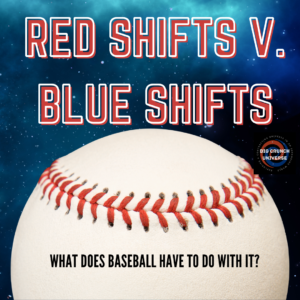Blog
More coming soon! Subscribe to get new blog updates in your inbox!
- What are some arguments against dark energy and dark matter?
While dark energy and dark matter provide theoretical explanations for observed phenomena in the universe, there are ongoing debates and alternative hypotheses challenging their existence. Here are some critical views against dark energy and dark matter:
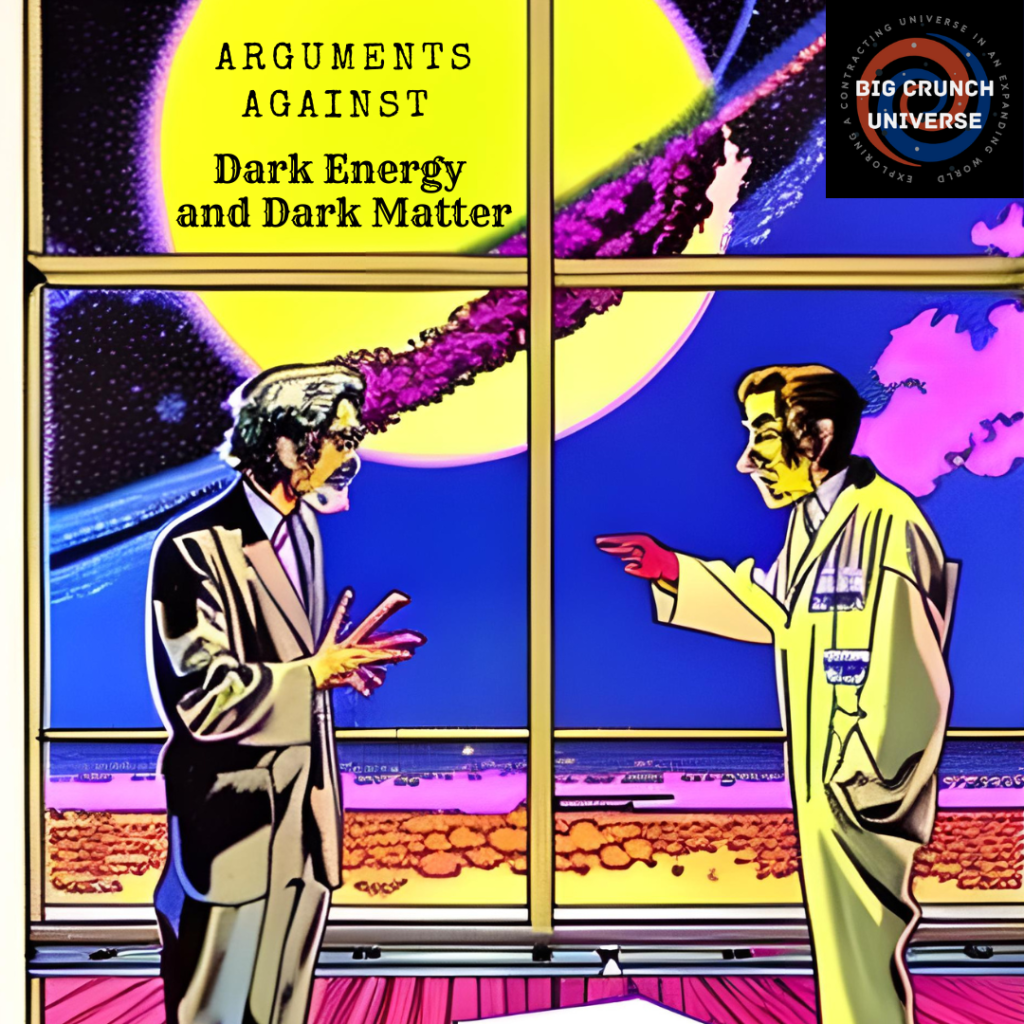
1. Modified Gravity Theories:
Some physicists propose modified gravity theories, such as Modified Newtonian Dynamics (MOND) or Modified Gravity (MOG), which suggest that the observed gravitational effects attributed to dark matter can be explained by modifying the laws of gravity on large scales. These theories aim to account for the observed galactic rotation curves and gravitational lensing without the need for additional invisible matter.
2. Systematic Errors and Misinterpretations:
Skeptics argue that the evidence for dark matter and dark energy is based on indirect observations and measurements that rely on assumptions and models. They suggest that some of the observed phenomena can be explained by systematic errors, misinterpretations of data, or incomplete understanding of astrophysical processes.
3. Emergent Gravity:
Some researchers propose the concept of emergent gravity, which suggests that gravity is not a fundamental force but rather emerges from the collective behavior of particles or information in the universe. According to this idea, the effects attributed to dark matter can be explained by the emergent nature of gravity, eliminating the need for unseen matter.
4. Cosmological Constant Problem:
The cosmological constant, associated with dark energy, is the leading explanation for the observed accelerated expansion of the universe. However, there is an ongoing debate about the fundamental nature of the cosmological constant and why its value is so small compared to theoretical predictions. Critics argue that the cosmological constant problem raises doubts about the existence of dark energy and suggests a need for alternative explanations.
5. Modified Dark Matter Theories:
Instead of positing a new type of matter, some researchers propose modifying the laws of physics at large scales to explain the observed gravitational effects. These alternative theories attempt to account for the observed phenomena by modifying the behavior of ordinary matter, rather than invoking the existence of dark matter particles.
It is important to note that while these arguments challenge the prevailing notions of dark energy and dark matter, the majority of the scientific community supports the existence of these concepts based on the wealth of observational and theoretical evidence accumulated over the years. Nonetheless, ongoing research and alternative theories contribute to the scientific process of refining our understanding of the universe.
- Unveiling the Mystery: Dark Matter and Its Enigmatic Nature
Today, we’re diving into the realm of astrophysics to unravel the enigma of dark matter. Picture this: as you gaze at the night sky, what if I told you that most scientists believe that a significant part of the universe is invisible to our eyes? Intriguing, right? Well, let’s embark on this cosmic journey together and explore the fascinating concept of dark matter.
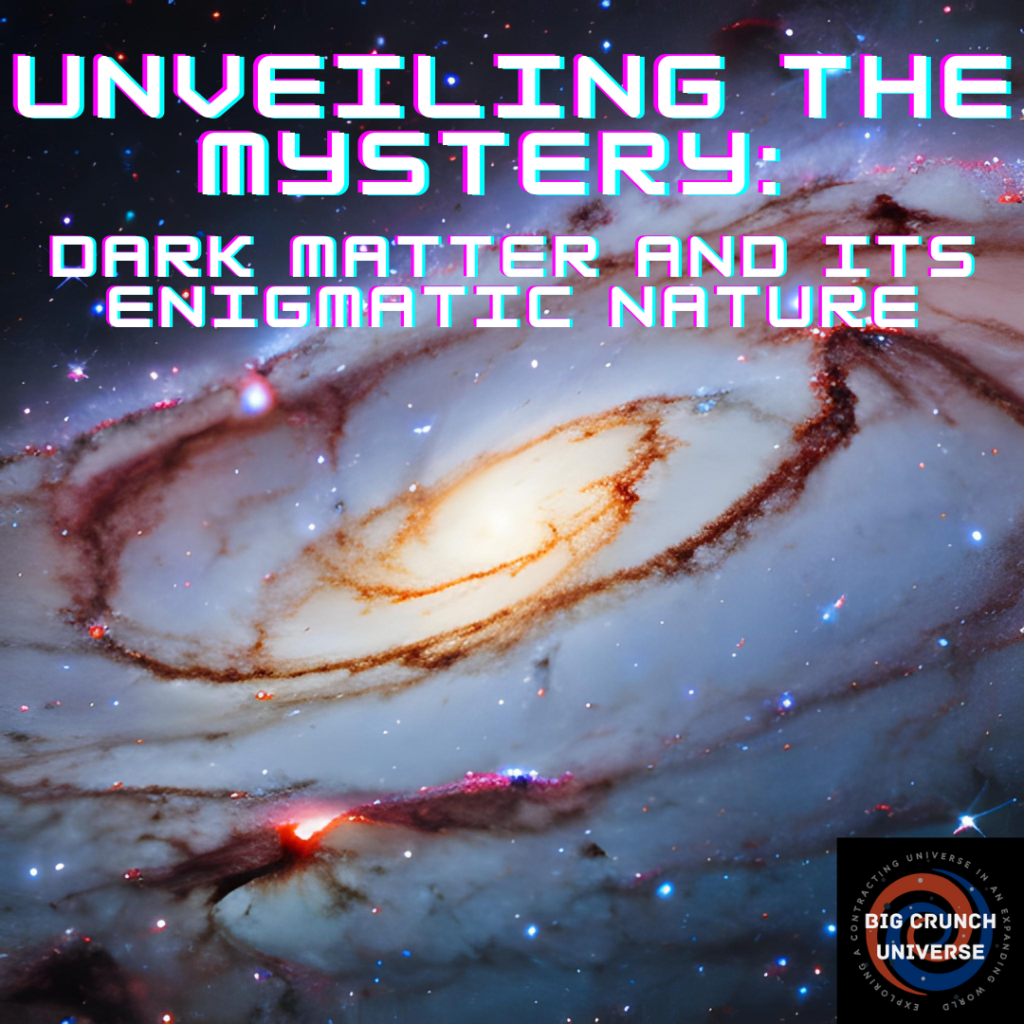
The Cosmic Conundrum:
First things first, let’s address the big question: what exactly is dark matter? In simple terms, it’s a hypothetical substance that accounts for a substantial portion of the mass in the universe. The catch is that it neither emits nor reflects any detectable electromagnetic radiation, making it invisible to our traditional telescopes.
What’s the Matter?
You might be thinking, “Well, if we can’t see it, how do we even know it exists?” Great question! The existence of dark matter was initially postulated by Swiss astronomer Fritz Zwicky in the 1930s. Zwicky observed that galaxies in the Coma Cluster were moving at surprisingly high speeds, given the amount of visible matter present. He concluded that there must be some invisible matter at play, tugging on these galaxies, and thus, dark matter was born.
Cosmic Dance:
So, what role does dark matter play in our cosmic dance? Well, it turns out that dark matter’s gravitational pull affects the distribution of galaxies and other cosmic structures. It acts as cosmic scaffolding, shaping the universe we see today. Without dark matter, galaxies would not have formed and the universe would look drastically different. It’s like the hidden architect behind the scenes, orchestrating the cosmic symphony.
Detective Work:
While dark matter remains elusive, scientists have developed several ingenious methods to detect its presence indirectly. One of the most significant pieces of evidence comes from the study of galaxy rotation curves. Imagine a spinning disk-like galaxy: according to the laws of physics, objects farther from the center should move slower. However, observations have revealed that the outer regions of galaxies rotate at similar speeds to the inner regions. This suggests the presence of invisible mass, or dark matter, providing the necessary gravitational pull to keep these outer regions in line.
Cosmic Lensing:
Another powerful technique used to study dark matter is gravitational lensing. When light from a distant galaxy passes through the gravitational field of a massive object, like a galaxy cluster, it gets bent, distorted, and magnified. By observing these lensing effects, scientists can map the distribution of dark matter in the universe. It’s like using a cosmic magnifying glass to see the invisible.
Candidates and Clues:
While the identity of dark matter remains a mystery, scientists have put forth various intriguing candidates. One prominent contender is the Weakly Interacting Massive Particle (WIMP). WIMPs are hypothetical particles that barely interact with ordinary matter, making them incredibly difficult to detect. The search for WIMPs involves experiments deep underground, shielded from other particles, to catch a glimpse of these elusive entities.
Beyond the Standard Model:
Dark matter not only challenges our understanding of the cosmos but also pushes the boundaries of particle physics. It serves as a crucial puzzle piece in the quest to go beyond the Standard Model, the prevailing theory describing the fundamental particles and forces in the universe. Solving the dark matter riddle could revolutionize our understanding of physics and provide insights into the nature of the universe itself.
The Unseen Force:
Dark matter is an invisible, elusive substance that constitutes a significant part of the universe’s mass. Its presence is inferred through its gravitational effects on visible matter. Scientists continue to explore various detection methods and study its impact on cosmic structures. But is it possible that the dismissed theory of a contracting universe could explain what dark matter cannot?
- Is the Universe Contracting? Rethinking the Expanding Universe Theory
For decades, the prevailing view among scientists has been that the universe is expanding at an accelerating rate. However, recent astronomical observations and theoretical considerations have raised intriguing questions about this widely accepted notion. In this blog post, we will explore why the theory of a contracting universe should be reevaluated, challenging the prevailing concept of cosmic expansion.
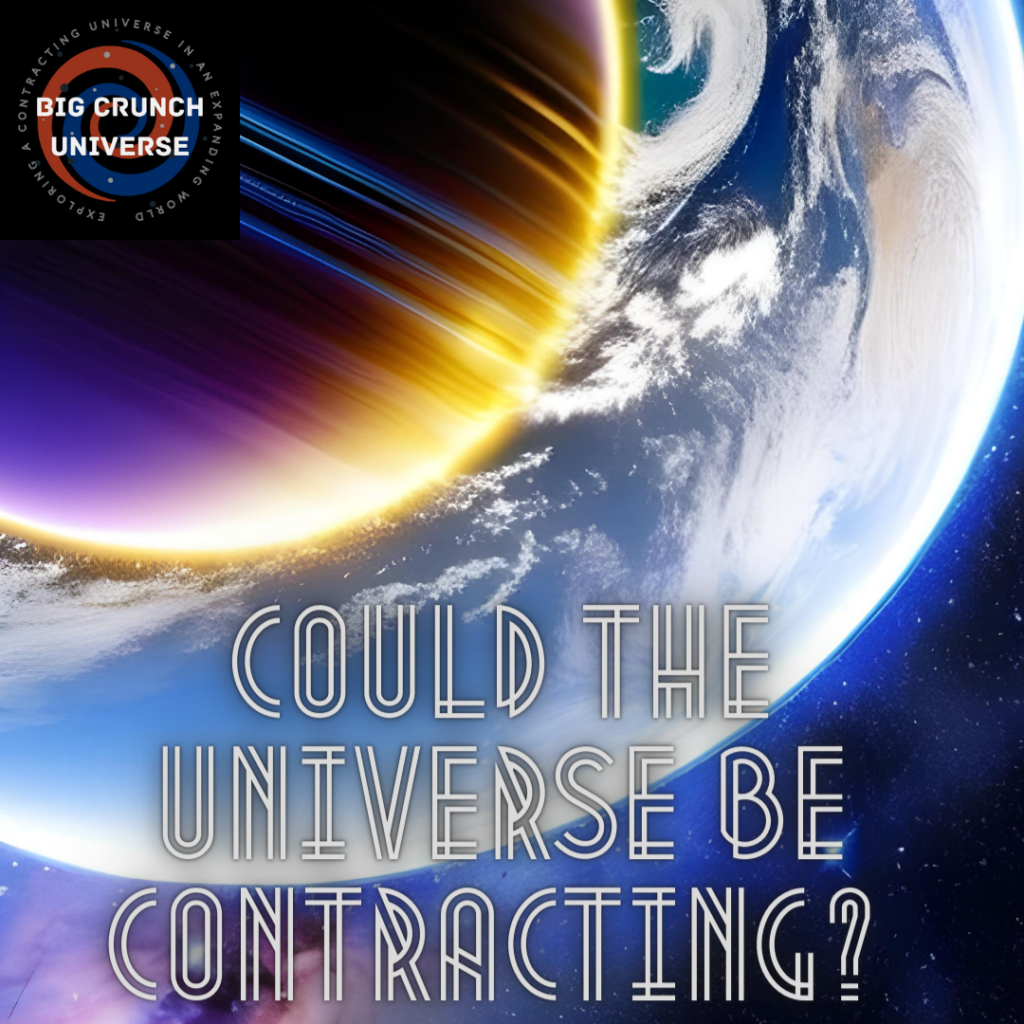
1. Alternative Observational Evidence:
While the expanding universe theory is primarily supported by observations of distant supernovae and the cosmic microwave background radiation, alternative interpretations of these observations are possible. Some scientists argue that the redshift of distant galaxies, which is commonly attributed to the expansion of space, could be caused by other phenomena such as gravitational interactions or the evolution of light over cosmic distances. These alternative explanations question the foundation of the expanding universe theory.
2. Dark Energy and Dark Matter:
The expanding universe theory heavily relies on the concepts of dark energy and dark matter. Dark energy is believed to account for the accelerating expansion, while dark matter is proposed to explain the observed gravitational effects on galaxies and galaxy clusters. However, both dark energy and dark matter remain hypothetical and have not been directly detected. The reliance on these elusive components raises doubts about the validity of the expanding universe theory.
3. Gravitational Interactions:
While the expansion of the universe is evident on a large scale, gravitational interactions play a crucial role in shaping the structure of the cosmos. On smaller scales, such as within galaxy clusters, the gravitational pull between galaxies can lead to the formation of superclusters and even eventual mergers. These local gravitational interactions raise questions about the notion of an expanding universe when structures are actively coming together under gravity’s influence.
4. Alternative Theoretical Frameworks:
Reevaluating the expanding universe theory requires considering alternative theoretical frameworks. For instance, some scientists propose cyclic models of the universe, where expansion is followed by contraction in an endless cycle. These models suggest that the universe undergoes a phase of contraction after reaching a maximum expansion, leading to a new cycle of expansion. While still speculative, cyclic models offer an intriguing alternative that challenges the concept of a perpetually expanding universe.
5. Quantum Cosmology and Singularities:
Another reason to reevaluate the expanding universe theory lies in the realm of quantum cosmology. The theory of general relativity, which describes gravity on a cosmic scale, breaks down at the extremely high densities and temperatures found in the early universe. To understand the universe’s behavior at those early stages, a theory of quantum gravity is needed. By incorporating quantum effects into the cosmological framework, new insights may emerge that could reshape our understanding of cosmic expansion.
Conclusion:
While the expanding universe theory has been the dominant paradigm for understanding the cosmos, it is essential to maintain a spirit of scientific inquiry and reevaluate established theories. Alternative observational interpretations, the unknown nature of dark energy and dark matter, the significance of gravitational interactions, and the possibility of alternative theoretical frameworks all warrant a fresh look at the concept of a contracting universe. By questioning and reevaluating our assumptions, we can advance our understanding of the cosmos and pave the way for new breakthroughs in cosmology.
- Unveiling the Mysteries of Dark Energy: The Cosmic Enigma
Welcome, cosmic enthusiasts, to our journey through the depths of the universe! Today, we embark on an exploration of one of the most perplexing phenomena known to humanity: dark energy. Strap on your intergalactic seatbelts as we unravel the secrets of this enigmatic force that drives the expansion of our universe.
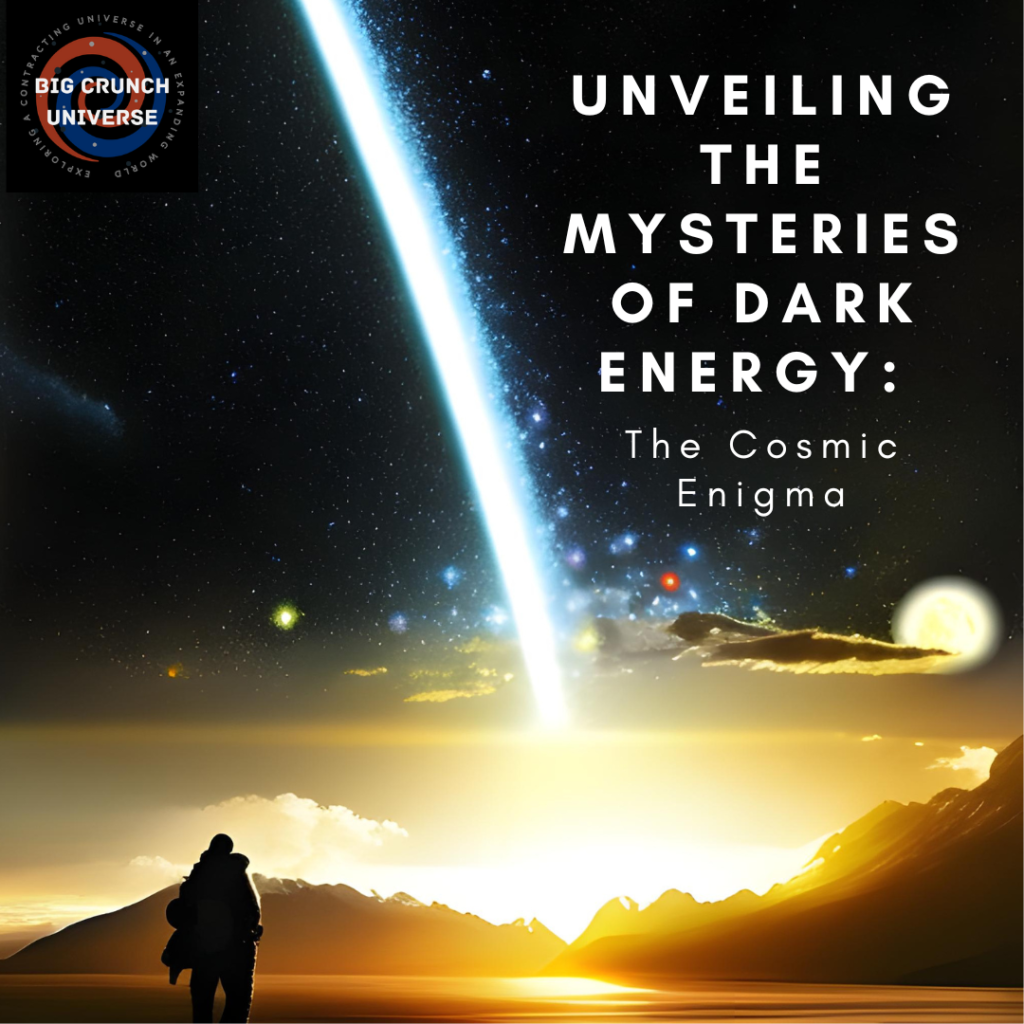
What is Dark Energy?
Dark energy is a mind-boggling concept in astrophysics that defies conventional understanding. In simple terms, it is a hypothetical form of energy that permeates all of space and exerts a repulsive gravitational force, causing the universe to expand at an accelerating rate. Unlike matter and dark matter, dark energy does not clump together or interact with electromagnetic radiation, making it invisible and incredibly difficult to detect.
The Discovery:
The existence of dark energy came to light in the late 1990s when astronomers were studying the brightness of distant supernovae, exploding stars in distant galaxies. They expected the expansion of the universe to be slowing down over time due to gravity. However, the observations revealed the opposite: the universe was expanding at an accelerating pace. This astonishing revelation led to the realization that an unknown force, later dubbed dark energy, was counteracting gravity on cosmic scales.
Understanding the Expansion:
To understand how dark energy affects the expansion of the universe, we need to delve into Einstein’s theory of general relativity. According to this theory, the curvature of spacetime is influenced by the distribution of matter and energy. In the case of a positive cosmological constant, a term in Einstein’s equations associated with dark energy, the fabric of spacetime stretches as the universe expands. This expansion causes galaxies to move away from each other at an ever-increasing rate, akin to the inflation of a balloon.
The Puzzle Deepens:
Despite its name, dark energy remains shrouded in mystery. Scientists have proposed various hypotheses to explain its origin, including the possibility that it arises from quantum fluctuations in empty space or a new fundamental force. However, the precise nature of dark energy remains elusive, leaving researchers puzzled.
Measuring Dark Energy:
While dark energy itself cannot be directly observed, its effects can be inferred through observations of cosmic phenomena. Scientists employ a variety of methods, such as mapping the large-scale structure of the universe, measuring the cosmic microwave background radiation, and studying the motion of galaxies and galaxy clusters. These observational data provide clues about the behavior of dark energy and its influence on the universe’s expansion.
Implications and Future Research:
Understanding dark energy is crucial for our comprehension of the fate of the universe. If dark energy continues to accelerate the expansion, it may lead to the “Big Rip,” a scenario in which galaxies, stars, and even atoms are torn apart by the ever-increasing cosmic expansion. On the other hand, if dark energy weakens over time, the universe could experience a “Big Freeze” or a “Big Crunch.”
To shed light on this cosmic conundrum, scientists are conducting experiments and refining observational techniques. The Dark Energy Survey, the Large Synoptic Survey Telescope, and the European Space Agency’s Euclid mission are among the initiatives aiming to deepen our understanding of dark energy.
Conclusion: Dark energy presents an extraordinary cosmic mystery that challenges our current understanding of the universe. But perhaps the original theory of a contracting universe could explain the physics of the universe without the concept of dark energy?
- Is the Theory of a Contracting Universe Making a Comeback?

Over the years, scientists have proposed various cosmological theories to understand the origins and fate of our universe. One such theory, the idea of a contracting universe, gained prominence but eventually fell out of favor in the scientific community. However, recent discoveries and advancements in our understanding of the cosmos have sparked renewed interest in revisiting this intriguing concept. In this blog post, we will explore why the theory of a contracting universe was abandoned and delve into compelling reasons why it is now being reconsidered.
The Abandonment:
In the mid-20th century, the notion of a contracting universe, also known as the “Big Crunch,” gained traction. According to this theory, the expansion of the universe, set in motion by the Big Bang, would eventually reverse, leading to a contraction. It proposed a cyclical model of the universe, where successive cycles of expansion and contraction occurred indefinitely.
However, in the late 1990s, groundbreaking observations startled the scientific community. Astronomers discovered that the universe’s expansion is accelerating, rather than slowing down as expected. This discovery was awarded the Nobel Prize in Physics in 2011 and led to the formulation of the concept of dark energy. This mysterious force, driving the accelerated expansion, dealt a heavy blow to the theory of a contracting universe.
As the evidence for dark energy mounted, scientists began to favor an alternative model known as the “Big Freeze” or the “Heat Death.” In this scenario, the universe’s expansion continues indefinitely, eventually leading to a state of maximum entropy, where all energy is evenly distributed and no new stars can form. The idea of a contracting universe faded into obscurity.
The Reconsideration:
Despite the dominance of the Big Freeze theory, recent developments in our understanding of the cosmos have reignited interest in revisiting the idea of a contracting universe. Let’s explore some compelling reasons why scientists are giving this theory a second look:
1. Modified Understanding of Dark Energy:
While dark energy remains enigmatic, scientists have not given up on the possibility that our understanding of it might evolve. Current models assume a constant or slowly evolving dark energy density, leading to eternal expansion. However, new theories suggest that dark energy could change over time, possibly even becoming negative and driving a contraction. Such a change in our understanding could bring the contracting universe theory back into play.
2. Quantum Physics and the Bounce Theory:
The field of quantum physics offers intriguing possibilities for reconciling the Big Crunch theory with our current understanding. The concept of a quantum bounce suggests that when the universe reaches its smallest possible size, the quantum realm takes over, causing it to bounce back and initiate a new cycle of expansion. This concept provides a fascinating alternative to the traditional Big Bang and could resurrect the notion of a contracting universe.
3. Cosmological Cycles and Multi-Dimensional Space:
Advancements in theoretical physics have introduced the possibility of multi-dimensional space and cyclical models of the universe. String theory and brane cosmology propose that our three-dimensional universe is a “brane” floating within a higher-dimensional space. In this framework, cycles of expansion and contraction become plausible, reigniting the idea of a contracting universe as one phase in an eternal cosmic dance.
Conclusion: The theory of a contracting universe, once abandoned due to the discovery of dark energy and the accelerating expansion, is now being reconsidered with fresh perspectives. Scientists are exploring alternative explanations for dark energy, investigating quantum bounce scenarios, and delving into the complexities of multi-dimensional space. As our knowledge expands, it is crucial to remain open to revisiting and reevaluating previously discarded theories. The future of cosmology holds exciting possibilities, and only time will tell whether the theory of a contracting universe will make a remarkable comeback, challenging our current understanding of the cosmos.
Red Shifts and Blue Shifts: What does baseball have to do with it?
We know red shifts and blue shifts help explain how things move in the universe, but what does baseball have to do with it?
First, let’s clear up what red shifts and blue shifts are in the universe. A red shift in the spectra of light means that the emitter of the light and the receiver of the light are moving farther apart. If they are moving apart, it will take the light longer to reach the receiver than if they were both still. This causes the crests of the light waves to reach the receiver at a lower frequency. Light waves at lower frequencies appear on the red side of the spectrum. A blue shift occurs when the emitter and receiver are moving closer together. This causes the waves of light to reach the receiver at a faster/higher frequency than if they both were still. Higher frequencies appear on the blue side of the spectrum.
Now to the good stuff, baseball. Red and blue shifts are much like a pitching machine on wheels. If the pitching machine is approaching the batter as it shoots out the balls, the balls will reach the batter in more rapid succession mirroring a blue shift in frequency. But if the pitching machine is moving away from the batter, the balls reach the batter more slowly, mirroring a red shift in frequency. If the batter is moving toward the pitching machine, the balls will reach the batter at a higher frequency. But if both are moving, the frequency depends on whether they are generally moving closer or farther apart.
Note that it doesn’t matter whether the batter is moving towards the machine, the machine is moving towards the batter or they are both moving. The only thing that matters is whether the distance between them is increasing or decreasing as they both are moving and the resulting increase or decrease in the frequency with which the balls reach the batter.
Assume an astronomer on Earth is looking at the spectra of light from a distant galaxy. If the distance between the Milky Way and the galaxy is getting smaller, the astronomer will see a blue shift in the light from the galaxy. If the distance between the Milky Way and the galaxy is increasing, the astronomer will see a red shift in the light from the galaxy. The same would be true from any other star or planet in the universe. So all the red shift that Hubble discovered tells us is that the Earth and most distant galaxies are moving farther apart, but whether everything is moving outward or the universe is not expanding is another question.
